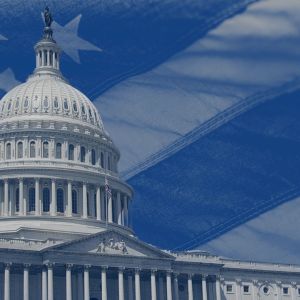BitcoinWorld Bitcoin’s Crucial Edge: Arthur Hayes Unveils Urgent Warnings on U.S. Bonds and Stablecoin Shifts In the ever-evolving world of finance, where traditional wisdom often clashes with innovative insights, one voice consistently cuts through the noise: Arthur Hayes, co-founder of the pioneering cryptocurrency exchange BitMEX. Known for his provocative yet prescient analyses, Hayes recently dropped a bombshell that has investors and market watchers buzzing. His core message? It’s time to rethink your portfolio, particularly your exposure to U.S. bonds . This isn’t just another market prediction; it’s a fundamental re-evaluation of where true value and liquidity reside in the global financial system, with significant implications for Bitcoin and the broader crypto market. Arthur Hayes’ Bold Stance: Why Shun U.S. Bonds for Bitcoin? For decades, U.S. government bonds have been the bedrock of conservative investment portfolios. They are widely lauded by financial advisors as a safe haven, a low-risk asset offering stability and predictable returns. Yet, Arthur Hayes argues that this conventional wisdom is now fundamentally flawed. In his latest Substack post, Hayes unequivocally states that buying U.S. government bonds today is a mistake, an investment choice that will likely leave you lagging in the long run. Why such a stark warning against what many consider the safest asset class? Hayes’ perspective is rooted in a deep understanding of macroeconomic forces and the changing nature of money. He contends that the perceived safety of bonds is illusory in an environment where inflation can erode purchasing power and where other asset classes offer vastly superior growth potential. Instead, he advocates for a strategic pivot towards more dynamic assets. Opportunity Cost: By tying up capital in low-yield bonds, investors miss out on significant upside potential elsewhere. Inflationary Pressures: While bonds offer fixed returns, the real value of those returns diminishes with persistent inflation, effectively making them a losing proposition over time. Shifting Market Dynamics: The global financial landscape is undergoing a monumental transformation, where traditional risk-reward profiles are being redefined. Hayes points specifically to Bitcoin (BTC) and the Nasdaq as far more attractive alternatives. These assets, he argues, possess the inherent characteristics necessary to not only preserve but significantly grow wealth in the current economic climate. The agility, innovation, and disruptive potential embedded within these markets offer a stark contrast to the static nature of government debt. Decoding Stablecoin Liquidity : A New Financial Weapon? Beyond his warnings on bonds, Arthur Hayes delves into the intriguing, and somewhat unsettling, role of stablecoins in the modern financial ecosystem. While many view stablecoins like USDC or USDT primarily as tools for fast, borderless payments or efficient cryptocurrency trading, Hayes presents a far more strategic and less altruistic narrative. He posits that the U.S. government’s growing support for stablecoins isn’t driven by a desire to foster fintech innovation or empower companies like Circle. Instead, Hayes asserts that stablecoins are being weaponized. Their true purpose, in his view, is to empower large traditional banks , providing them with an unprecedented mechanism to manage and deploy liquidity. This perspective challenges the popular narrative, suggesting a deeper, more calculated agenda at play. His core argument revolves around the concept of a ‘liquidity weapon.’ Stablecoins, backed by U.S. dollars and typically held in bank accounts or short-term U.S. Treasuries, essentially act as a conduit. They allow major financial institutions to purchase massive amounts of government debt without needing the Federal Reserve (Fed) to engage in quantitative easing (QE). In essence, stablecoins provide a bypass, enabling a continuous flow of capital into government coffers, independent of the Fed’s direct market interventions. This mechanism creates a self-sustaining loop where the demand for U.S. debt can be met through alternative channels, maintaining market stability and funding government expenditure even when the Fed is not actively buying bonds. This subtle yet powerful shift in liquidity management is what Hayes believes is the true story behind the institutional embrace of stablecoins. The Role of Traditional Banks in the Stablecoin Narrative If stablecoins are indeed a ‘liquidity weapon,’ then traditional banks are the primary beneficiaries and orchestrators of this new financial strategy. Hayes emphasizes that the narrative around stablecoins is often misdirected, focusing too much on the fintech companies that issue them and not enough on the powerful entities pulling the strings behind the scenes. These large banks, with their deep ties to government and their immense financial infrastructure, are uniquely positioned to leverage stablecoins for their strategic advantage. Consider the implications: when stablecoins are minted, their reserves are typically held in commercial banks. These reserves, in turn, can be invested in short-term U.S. government debt. This creates a direct, efficient, and discreet channel for banks to facilitate the purchase of government obligations. This process effectively allows for a form of ‘shadow QE’ where liquidity is injected into the bond market without the overt, public operations of the Federal Reserve. Hayes’ analysis suggests that the market is already awash in liquidity, even if the Fed hasn’t officially restarted quantitative easing. This liquidity isn’t necessarily flowing from traditional central bank operations but is rather being channeled through the burgeoning stablecoin ecosystem, primarily managed and controlled by major banks. This means that while the public narrative might focus on inflation and interest rate hikes, the underlying plumbing of the financial system is adapting in ways that ensure continued demand for government debt. Therefore, Hayes advises investors to shift their focus. Instead of obsessing over the innovations of Circle or other fintechs in the stablecoin space, he urges a closer look at the U.S. government and the major banks. These are, in his view, the true architects and drivers of the stablecoin narrative, shaping its utility to serve their own financial and geopolitical objectives. Why Bitcoin Remains a Top Investment Choice Amidst Shifting Tides In light of these revelations about U.S. bonds and stablecoin mechanics, Arthur Hayes consistently circles back to Bitcoin as a premier investment. His advocacy for BTC is not merely speculative; it’s deeply rooted in its fundamental properties as a decentralized, scarce, and censorship-resistant asset. In a world where traditional financial instruments are increasingly subject to manipulation or lose their real value due to inflation and strategic government actions, Bitcoin stands out as a robust alternative. Bitcoin’s value proposition is amplified when viewed through the lens of Hayes’ warnings. If U.S. bonds are a trap and stablecoins are a tool for centralizing financial power within traditional institutions, then Bitcoin offers a genuine escape route. It represents a hedge against inflation, a store of value independent of government control, and a potential for significant appreciation driven by its fixed supply and growing adoption. The benefits of investing in Bitcoin, as highlighted by Hayes, include: Superior Upside Potential: Compared to the meager returns of bonds, Bitcoin offers parabolic growth potential driven by network effects and increasing institutional interest. Decentralization: Unlike fiat currencies or stablecoins, Bitcoin is not controlled by any single entity, making it resilient to political or economic manipulation. Scarcity: With a hard cap of 21 million coins, Bitcoin’s scarcity provides a natural defense against inflation, unlike fiat currencies which can be printed indefinitely. Global Accessibility: Bitcoin offers a permissionless financial system accessible to anyone with an internet connection, fostering true financial inclusion. Hayes’ consistent recommendation for Bitcoin alongside the Nasdaq reflects a broader trend of smart money flowing into innovative, high-growth sectors that are poised to outperform traditional, yield-suppressed assets. It’s a call to action for investors to adapt to the new realities of global finance, where digital assets are no longer fringe but central to future wealth creation. Navigating the Future: Actionable Insights from Arthur Hayes Arthur Hayes’ recent insights offer a critical roadmap for investors seeking to navigate the complex currents of the global economy. His warnings against U.S. bonds and his unique perspective on stablecoin liquidity are not just academic theories; they are actionable intelligence for anyone looking to protect and grow their wealth. The key takeaways from his analysis are clear: Re-evaluate Traditional Advice: Don’t blindly follow conventional investment wisdom, especially concerning low-yield assets like U.S. bonds. Embrace Disruptive Assets: Allocate capital to high-growth, innovative assets like Bitcoin and the Nasdaq, which offer substantial upside potential. Understand the True Stablecoin Narrative: Look beyond the surface-level benefits of stablecoins and recognize their strategic role in empowering traditional banks and facilitating government debt management. Focus on the Big Players: Pay closer attention to the actions and strategies of governments and major banks, as they are the true architects of financial policy and liquidity. In a financial landscape increasingly shaped by digital innovation and shifting power dynamics, Hayes’ insights serve as a powerful reminder that vigilance and adaptability are paramount. The financial world is not static; it’s a dynamic arena where understanding the underlying mechanics and the true motivations of key players can make all the difference. By heeding these warnings and adjusting investment strategies accordingly, individuals can position themselves to thrive in the emerging financial paradigm. Arthur Hayes’ latest pronouncements serve as a powerful wake-up call, urging investors to challenge long-held beliefs and embrace a more forward-thinking approach to wealth management. His insights into the pitfalls of U.S. bonds and the strategic deployment of stablecoin liquidity by traditional banks underscore a fundamental shift in the global financial architecture. For those brave enough to look beyond conventional wisdom, the path forward is clear: diversify into resilient, high-growth assets like Bitcoin, and remain acutely aware of the hidden currents driving market liquidity. The future of finance is here, and it demands a new kind of investment strategy. To learn more about the latest crypto market trends, explore our article on key developments shaping Bitcoin’s institutional adoption. This post Bitcoin’s Crucial Edge: Arthur Hayes Unveils Urgent Warnings on U.S. Bonds and Stablecoin Shifts first appeared on BitcoinWorld and is written by Editorial Team


















